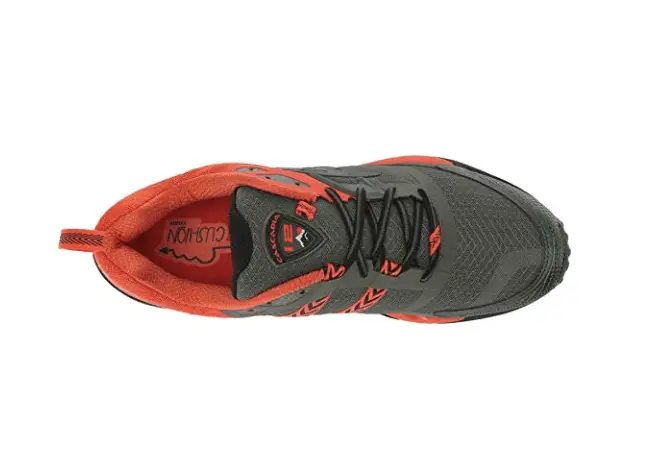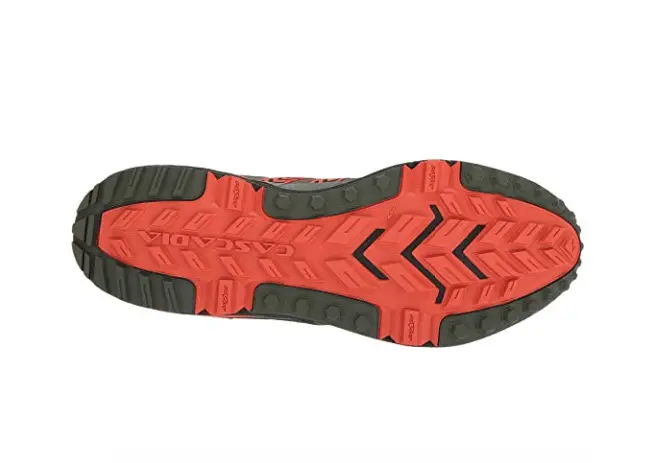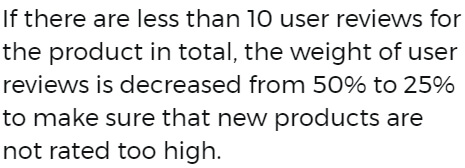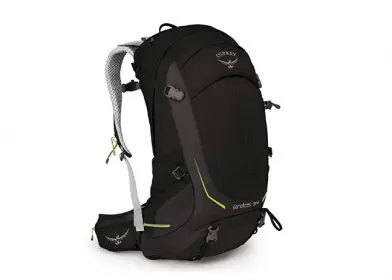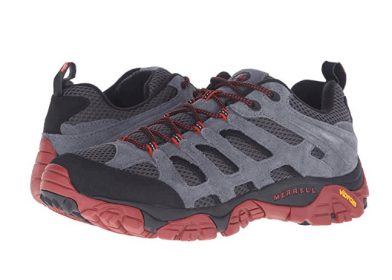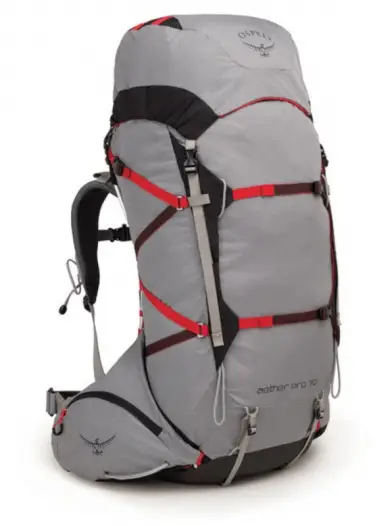Brooks Cascadia 12
Those in search of a running shoe designed for more rugged trails may find solace in the Brooks Cascadia 12. This is a trail running shoe. It is with a carbon/blown rubber outsole and synthetic mesh upper. Owners seem to enjoy the shoe’s stability, comfort, and performance. There are a few complaints regarding the fit and durability. We will discuss these issues further in this comprehensive review.
One of the more interesting comments, several customers make, is that shoe does not “feel” fast. That’s not because it’s a slow shoe, at all. It’s because they are so comfortable, according to online reviewers. One customer wrote that downhill the shoe is exceptionally fast because it is so stable. If you’re looking for a high-performance trail shoe, Brooks Cascadia 12 sets the pace.
- Very stable
- Well-cushioned
- Good support
- True Fit
- Withstands rugged trails
- Not waterproof
- Do not expect them to stretch
Brand
Brooks soon began producing shoes and apparel for running. Three decades later, in 2002, Brooks renamed itself “Brooks Running.” The company now devotes itself exclusively to the sport of running.
The people at Brooks Running seem passionate about the sport. That fanaticism translates into a top-quality shoe. Over the years, Brooks has been very innovative in the world of running shoes.
Remember when shoe fitters tried to convince you that a shoe would “correct” your biomechanics? Ouch. Brooks Running’s philosophy is for their shoe design to fit the biomechanics of your foot, for the running you’re doing. Not the other way 'round.
Version
Brooks has widened the toe box in the 12, compared to the 11 and past versions. If you’re not familiar with the Cascadia, reports are that its fit is similar to the Ghost. The toe box in the 12 is still narrower than the Glycerin.
Also, Brooks has added it’s Ballistic Rock Shield™ to the 12. Brooks’ shield is made of a thermoplastic (toughened by heating and cooling) ethylene-vinyl acetate or EVA “sheath.” The sheath is a layer of this EVA sandwiched between the outsole and the midsole, towards the front of the foot. This is where your foot impacts the ground. In Cascadia’s case, the trail floor, where the ball of your foot is pounding on rocks and sharp objects.
The Ballistic Rock Shield distributes the pressure of the impact across a wider surface area. Thus, reducing stress,, strain, and injury to soft tissue. This lessens the likelihood of bruising a bone, or even worse.
Key Features
-10mm Heel-To-Toe Drop
-Ankle-high
-Lace-up
-Synthetic mesh upper
-Synthetic lining
-EVA Midsole
-Carbon/blown rubber Outsole
-Ballistic Rock Shield
-Neutral support
Basic Features
Nothing spoils a run down a woodsy trail than a discarded shoe or other human flotsam. Brooks puts a lot of thought into the environmental impact of its products. One of the advanced features of the Brooks Cascadia 12 is the BioMoGo DNA technology. This means that while the cushioning is quite durable, it breaks down in the environment much faster, thus reducing the need for landfill.
Other advanced features include HPR Plus rubber makes the outsole more durable. Also, it has a sock-liner that is removable.
Responsiveness
You’re not looking at every rock, twig, hole, or divot, on the ground. There’s a lot of communication going on between your foot and your brain about these seemingly minor obstacles.
Add speed into the equation, and that means you need a responsive shoe. A responsive shoe is not merely one that does what you tell it to do, but one that does it consistently. Without consistency, your brain has difficulty making reliable predictions. That’s what slows you down.
There is near-universal agreement, among owners and reviewers, that the Brooks Cascadia 12 gives you stability, comfort, and responsiveness all in one sweet package. Owners say they use this shoe not just for running rugged trails but obstacle courses, walking, and backpacking as well.
Speed
One woman says that when running downhill in this shoe, it doesn’t feel as though she’s moving very fast. She said it is because the shoe is so stable and comfortable.
Support
To get an idea of how your foot strikes the ground is an old pair of shoes. Look at the underside. The wear pattern should be fairly obvious. A word of warning, changing how your shoe strikes the ground is not the same as correcting your foot’s natural inclination to pronate or supinate. If you’re in pain, see a foot specialist.
Stability
Upper
However, Brooks Cascade 12 upper had proven to be different as even after a period of wearing them, they show no signs of wear and tear or ripping. The shoe also has new straps on the inside part. They are interwoven with the lacing straps, thus adding to the support and secure wear.
Heel-to-Toe Drop
Protection
You also get the Four-Point Posting technology. This system distributes your balance more evenly front-to-back and side-to-side. That means you’re less likely to slip, twist an ankle, or slow down to avoid a fall.
This adds up to less time recuperating and more time running. All of this technology translates into less fatigue and injury, and a more comfortable run. You’re getting a faster, safer, more comfortable route.
Color
Maybe you want to stand out from the crowd or blend in. Perhaps the right color will psyche you up just enough to go a little farther or fast. Color plays a significant role when it comes to choosing a pair of shoes you'll want to wear for a long time.
You’re putting down good money for a shoe. Take the time to pick out the right color for you. Luckily, Brooks shoes come in some beautiful looking colors, not just the predictable two-tone patterns.
Those are some pretty wicked color combinations. Even the shoelaces coordinate. Hey, if you’re going to kick your game up a notch, you might as well kick it up in style.
Waterproof
Style
The patterning on the different materials from which the shoe is constructed, for instance. Part of that is pure style; different shapes and sizes create a pleasing look. It’s also functional. Different surface patterns protect against abrasion, shed dirt, provide traction, wicks away moisture, or controls how the fabric breaths.
Looking at the seams, do the edges line up? Is there space for something to wedge in there and pull the two pieces apart? Look at the stitching. Is tight, smooth, and uniform? Are the holes for the laces smooth or raggedly?
Price
Durability
Comfort
Bottom Line
Use the shoe for 90 days and if you’re not satisfied, return it. If you never use the shoe, and it’s still in the original packaging, you can return it within 365 days. Also, if the shoe fails to meet its life expectancy, and there’s a defect involved, contact Brooks for assistance. If you’re in the market for a shoe for trail running, be it rugged trails or obstacle courses, the Brooks Cascadia 12 may be just the shoe you’re looking.






